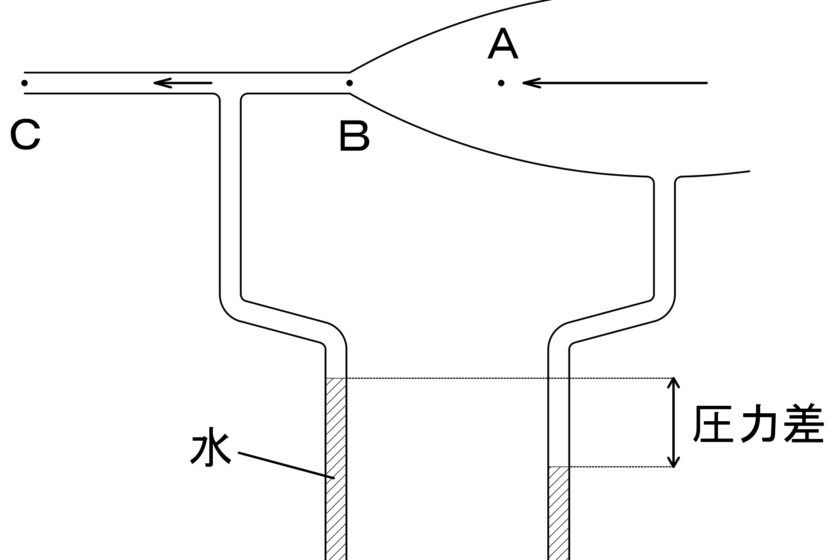Is the next-generation technology for anechoic chamber silencers here?
Have you ever seen a motorcycle muffler? Whether it’s attached or not makes a surprisingly big difference in sound level. The secret behind this almost magical noise reduction lies in the structure of the muffler. Of course, using sound-absorbing materials can further enhance its effect, but this time, we will focus on how the muffler structure itself suppresses sound. We also plan to apply this principle to the silencers used in our anechoic chambers.
Let’s start with the conclusion.
The loudness of sound is determined by fluctuations in atmospheric pressure (also known as static pressure). The structure of the muffler reduces this static pressure, thereby suppressing the sound.
Take a look at the diagram.

This diagram illustrates a “Venturi tube,” which demonstrates Bernoulli’s principle. Bernoulli’s principle states that when a fluid (in this case, air) moves, the dynamic pressure (pressure proportional to flow speed) and static pressure (pressure derived from atmospheric pressure) always maintain a balance.
For example, at point A, as air flows through a wide tube, the total pressure (dynamic pressure + static pressure) remains constant. However, at point B, where the tube narrows, the airflow speeds up, increasing dynamic pressure. As a result, static pressure decreases. At the narrowest point, point C, dynamic pressure reaches its maximum, and static pressure reaches its minimum. Since static pressure decreases here, the sound level is also reduced.
To further aid understanding, let’s consider the examples of trains and airplanes.
When a train enters a station at high speed, you are often warned to “stand behind the yellow line.” This is because the train’s speed causes the surrounding air to be pulled toward it. As air moves rapidly along the train’s surface, dynamic pressure increases while static pressure decreases, creating a force that pulls objects toward the train. This is why standing too close is dangerous.
Similarly, an airplane wing operates on the same principle. Air moves faster over the upper surface of the wing, reducing static pressure, while static pressure remains higher on the lower surface. This pressure difference generates lift, allowing the airplane to take off.

This principle forms the foundation of baffle structures, and we plan to apply this mechanism to further enhance the performance of our anechoic chamber silencers. By adjusting the balance between dynamic and static pressure, we can achieve more effective noise reduction.
In conclusion, this baffle structure based on Bernoulli’s principle will play a crucial role in future silencer development. At Enclosure, we will utilize this technology to provide superior silencers.
